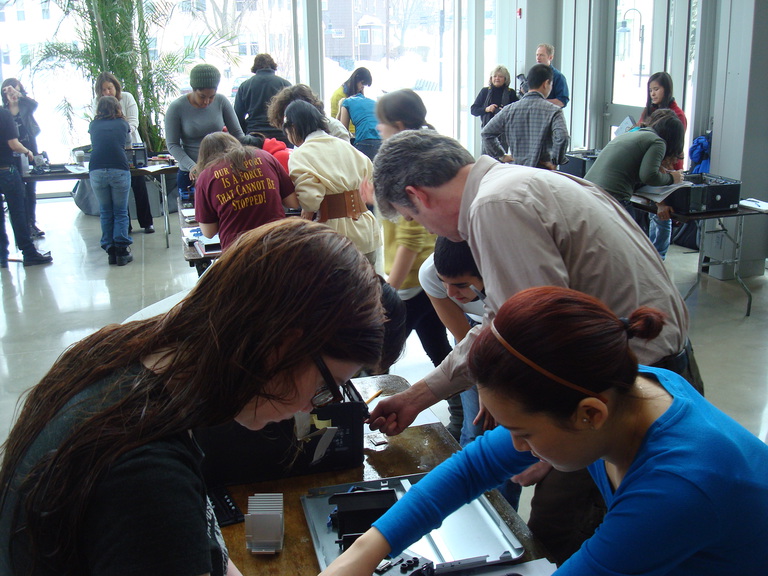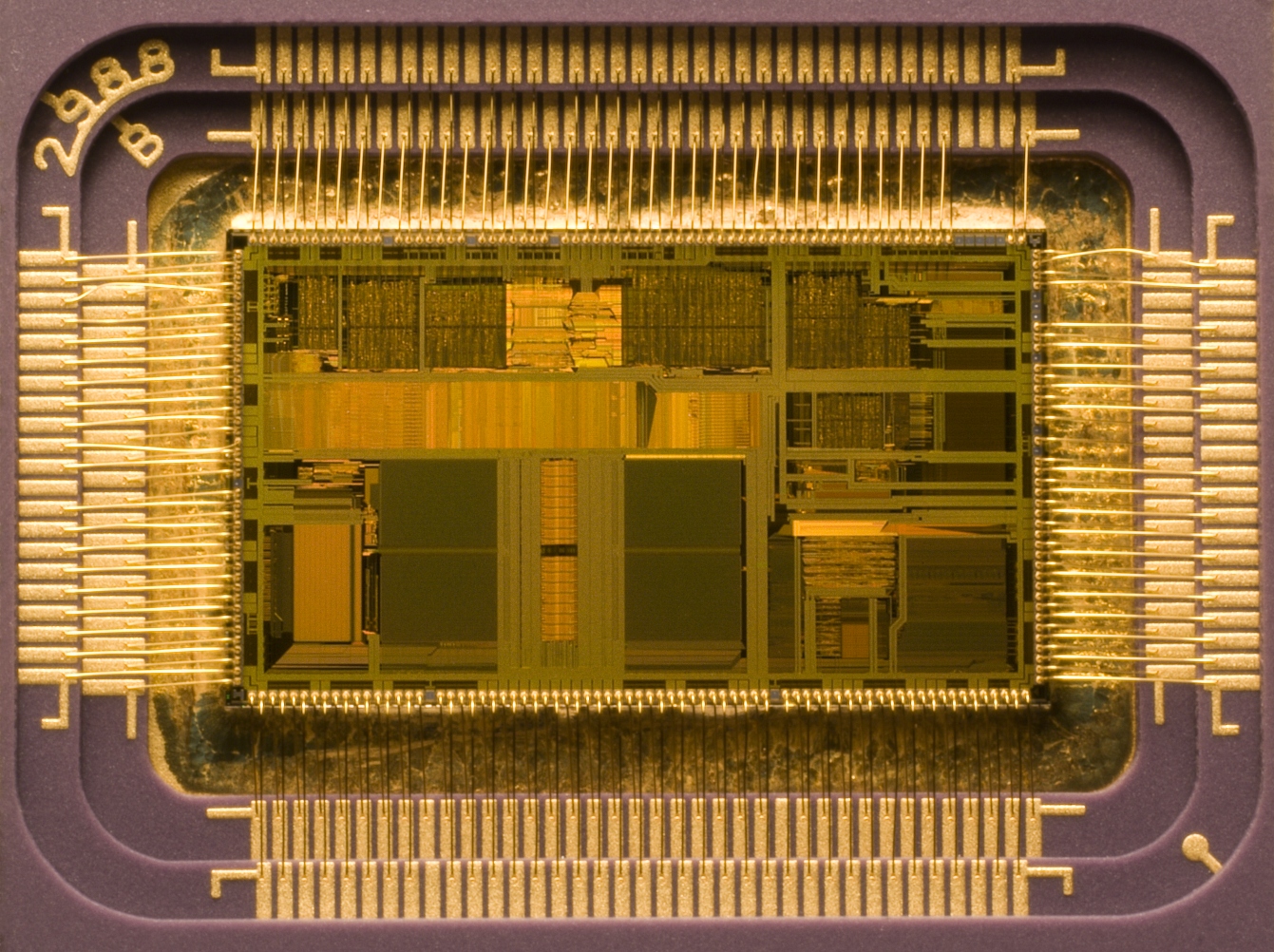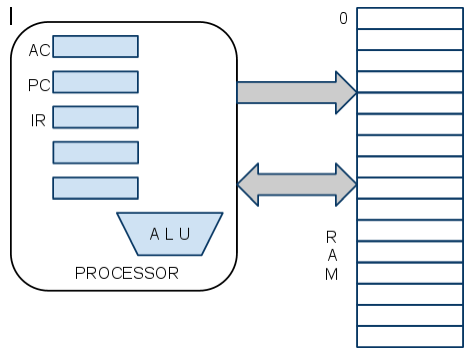|
|
| Line 155: |
Line 155: |
| | ---- | | ---- |
| | * [[CSC103 2011 Lab 3| Lab #3]] | | * [[CSC103 2011 Lab 3| Lab #3]] |
| − | * [[CSC103_2011_Homework_3 | Homework #3]] | + | * [[CSC103_2011_Homework_3 | Homework #3]] and [[CSC103_2011_Homework_3_Solution | Solution Programs]] <font color="magenta">'''<=== NEW'''</font> |
| | || | | || |
| | * Concentrate on Sections 3.2 and 3.4 in the textbook. | | * Concentrate on Sections 3.2 and 3.4 in the textbook. |
Revision as of 12:40, 27 February 2011
--D. Thiebaut 08:44, 7 January 2011 (EST)
Back to Main Page for CSC103
Prof
|
Dominique Thiébaut email
Dept. Computer Science
Ford Hall, 356.
Telephone: 3854
Office Hours: M:4-5, T3-4, W3-4, and my appointment
|
Weekly Schedule
| Week |
Topics |
Reading
|
Week 1
1/24
|
- Monday:
- Introduction to the semester
- Overview
- Binary System
- The Transistor
- Wednesday
- Quick review
- George Boole (1779-1848)
- Logic, logic expression = boolean expression
- Any complicated logic expression can be expressed with only 3 operators: AND, OR, and NOT
- Shannon (1916-2001), in 1948 writes a Master's thesis at MIT: Any binary numerical computation can be performed using logic expressions, and logic operators
- Verify that we can add in binary.
- Therefore we should be able to add using AND, OR, and NOT.
- This creates a need for electrical circuits that implement the 3 boolean operators
- Logic Gates: NOT, AND, OR
- Truth tables and verification of rules of addition
|
- Read Chapter 1 of the textbook. Skip Section 1.3 and up.
|
Week 2
1/31
|
- Two-bit adder (verify the equations with this exercise
- Logic Gates
- Data sheet for the AND gate.
- Logic Design
- Simulator
- Lab #1 Part 1 only, (and a copy of the simulator courtesy of Debbie S. and her lab partner)
- Wednesday
|
|
Week 3
2/7
|
- Monday
- Wednesday
- Review of WikiMedia editing
- Review of demolition lab
|
Please watch the following videos before the lab on 2/7!
|
Week 4
2/14
|
- Execution of an instruction (pdf)
- Exercise 1: initialize the contents of several variables to 0
- Exercise 2: increment a counter
- Exercise 3: compute sum of 3 variables
- Exercise 4: create an index and use it to sum up the same 3 variables
- Loops (infinite loop)
- JMP instruction and labels
- Exercise 5: create an infinite loop (incrementing a variable, for example)
- Exercise 6: create an infinite loop that clears the memory starting at 10
- Exercise 7: why does the program of Exercise 6 stop?
- Exercise 8: write a loop that loops 10 times (use a counter)
- Exercise 9: write a loop that stores 55 in the memory locations between 15 and 30
|
- Concentrate on Sections 3.2 and 3.4 in the textbook.
- Read the introduction to the xComputer Applet.
- Start reading the papers on the Singularity which we will discuss the last day of class:
|
Week 5
2/21
|
- Monday
- Our JavaScript editor: http://htmledit.squarefree.com/
- Elements of a Web page: the <html>, <body>, and <h1> tags
- Creating a Web page and loading it up in a browser
- HTML links: <a href="http://www.smith.edu">Smith College</a>
- javascript
- printing strings
- comments
- variables
- displaying the contents of variables
- concatenating strings and variables
- computing with variables
- loops
- First part of Lab #4 on Javascript: creating a javascript program, and running it.
- Wednesday: Rally Day

- Lab #4 (first part)
- NO HOMEWORK this week
|
|
Week 6
2/28
|
|
|
Week 7
3/7
|
- The singularity
- Moore's Law
|
|
Week 8
3/14
|

|
|
Wiki pages
Click here to access the class Wiki pages.
Additional Resources







